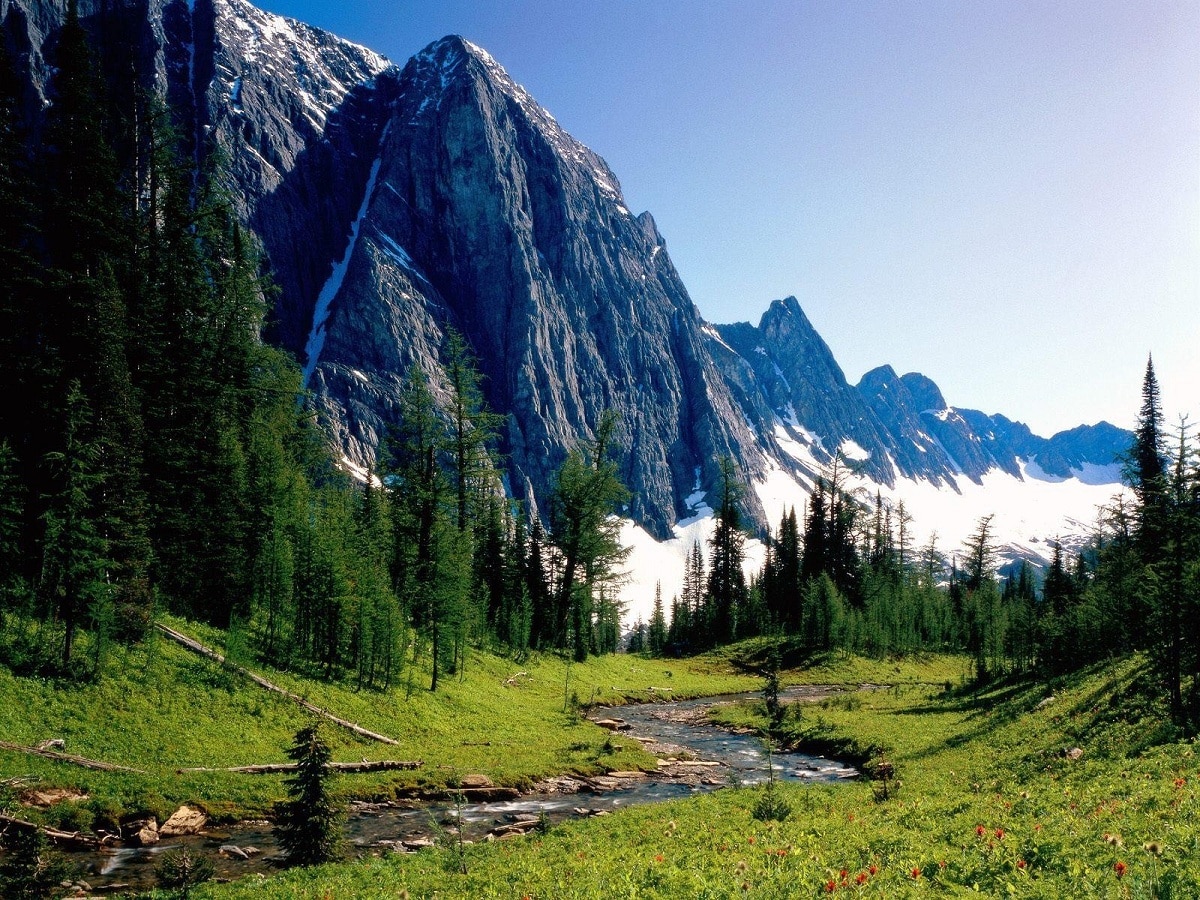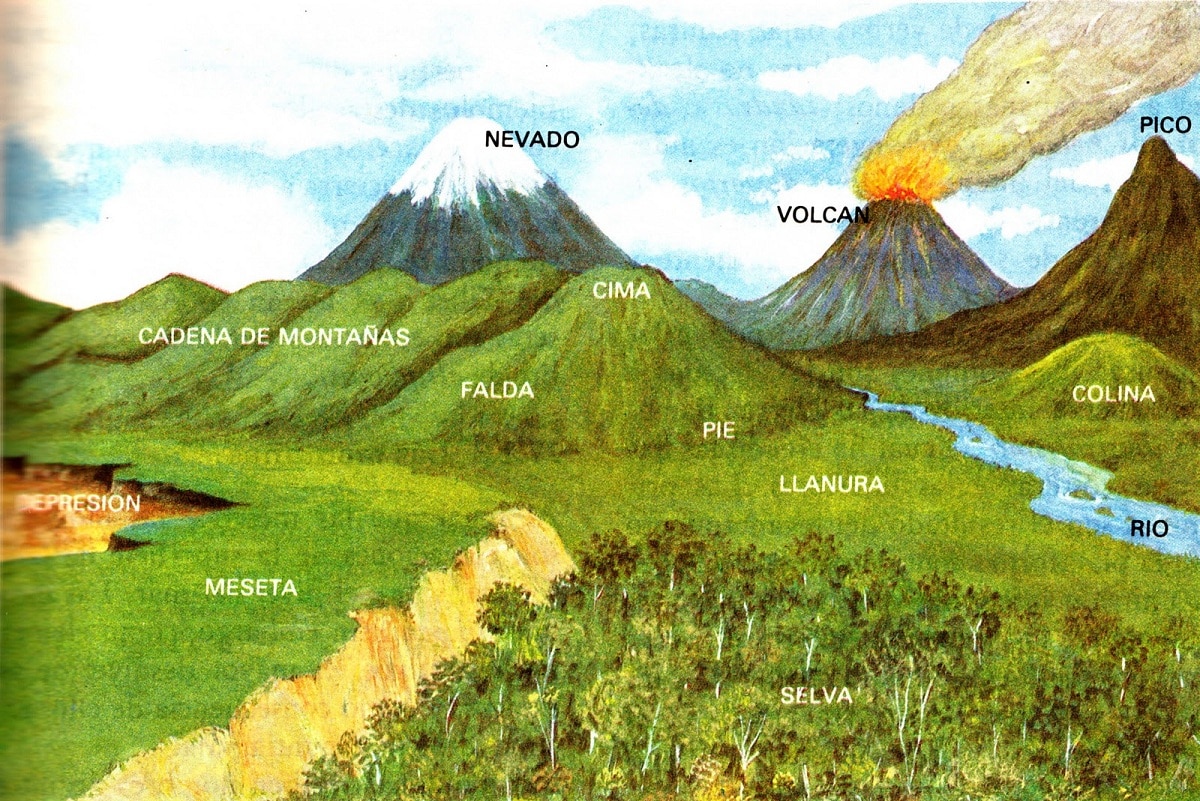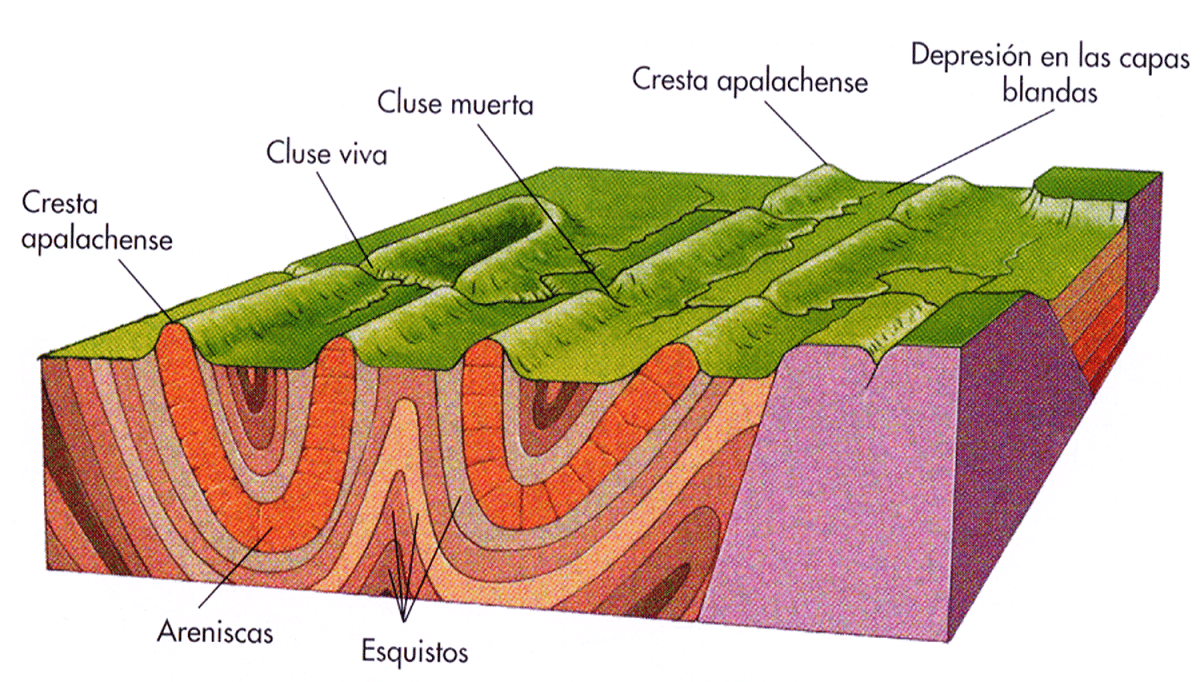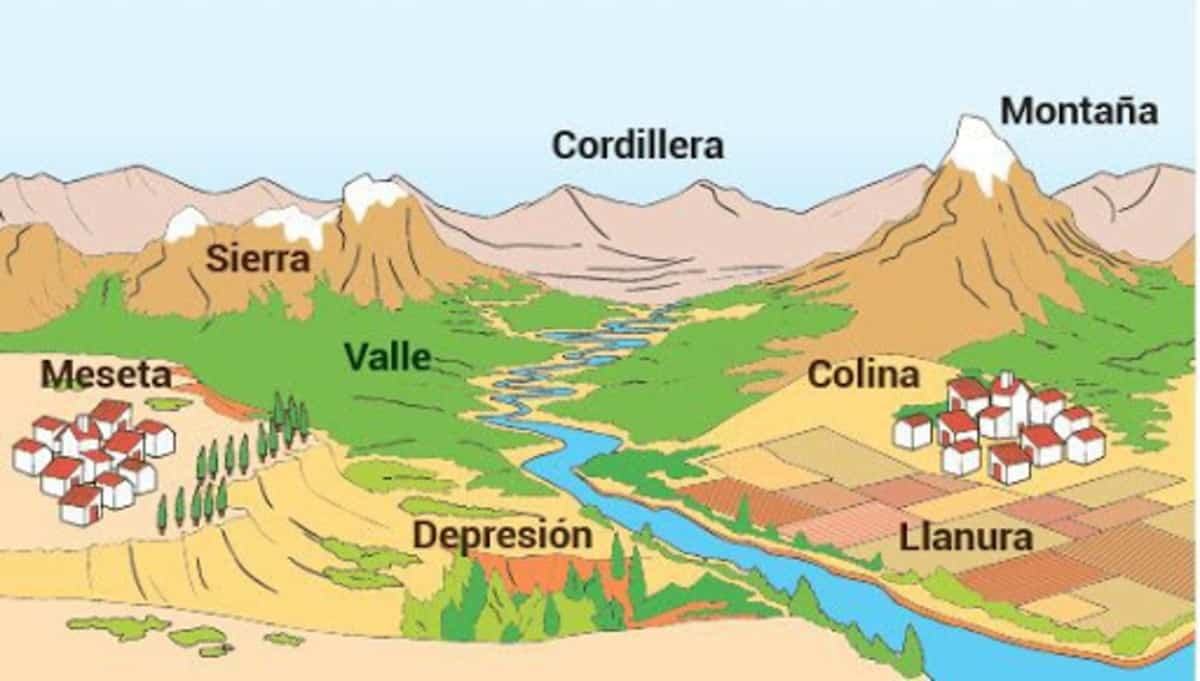
When we go to the field or see deformities in the terrain, we speak of the word relief. However, many people do not know what is relief or in what areas should be used what is it for in geology. The relief is something quite necessary for the life of the human being and the science of geology studies the relief in many cases.
For this reason, we are going to dedicate this article to telling you what relief is, what its characteristics are and the importance it has for the human being.
what is relief

Relief is a prominent texture of a surface with different variations. The most characteristic geographical features of the earth's surface are mountains, plateaus and plains.
Relief is also synonymous with geographical accidents. These incidents take the form of irregularities and inhomogeneities in terrestrial or aquatic ecosystems, which provide modification in specific areas and, in many cases, texture.
The reliefs are important for the study of climate, flora and fauna. Their appearance on the ground may be due to internal Earth processes, natural behavior or human intervention. Some geographic features, such as mountains, valleys, hills and plains, can be explained by factors such as long-term erosion, gravity and climate. Likewise, the term relief is used to refer to the sculptural technique in the art world.
Key features

Once we know what relief is, we are going to see what its main characteristics are:
- This is the result of geological processes.
- It can have endogenous or exogenous causes.
- It can be continental or marine.
- It can manifest through depression or elevation.
- It exists on the entire surface of the earth.
- Change the climate of an area.
- It is studied by geomorphology.
- May vary due to human intervention.
- It affects the way of life of the ecosystem and its inhabitants of its flora and fauna.
Examples of geographical reliefs

The most representative examples of terrestrial reliefs are:
- Moutains. Elevations above 1000 meters above sea level are usually grouped together. For example: Mount Everest in the Himalayas or Aconcagua in the Andes.
- Plateau. Flat elevations caused by tectonic movement or erosion. For example: Gran Pajonal in Peru or Meseta Central in Spain.
- Plain. Land with minimum height and few irregularities. Many of these originate from the flow of rivers or natural erosion. For example: Dogo Plain in Japan or Gulf Coast Plain in Mexico.
- mountain ranges A group of combined mountain ranges that usually have peaks. For example: the Alps in Central Europe or the Rocky Mountains in the United States.
- Valleys A depression in the land between mountains or uplands, usually with a river or waterway. For example: the Great Rift Valley in Africa or the Calchaquí Valley in Argentina.
- Colinas. The elevation is lower than the mountains and the top is rounded. For example: Mount Zion in Jerusalem or Connors Knob in Australia.
- Saws. A group of uplands smaller than a mountain range, but usually part of it. For example: Sierra de Ayllón in Spain or the Andes in Argentina.
Types of reliefs

Geographically, two main types of relief can be distinguished:
- continental relief. The part of land that protrudes above sea level. For example: mountains, plateaus, plains, mountains, etc.
- Ocean relief. The part of the earth that is below sea level. For example: seamounts, trenches, abyssal plains, etc.
Topography and climate are two elements of every landscape. Climate is understood as a set of atmospheric characteristics in a specific area, formed by elements such as temperature, humidity and altitude.
One of the factors that determines the climate of a region is the topography. This is mainly evident in areas with higher altitudes, since altitude changes certain characteristics of the climate. In mountains, air masses collide with these tall structures and rise, causing them to lose temperature and produce precipitation.
The mountains also form a veil that blocks the winds and air masses from the marine area, thus changing the climatic conditions of the surrounding area.
continental and oceanic relief
Continental relief is the part that emerges from the earth's surface in relation to sea level. Continental topography can be presented in the form of mountains, plains and faults, as well as groups of ancient mountains, which in turn form valleys, depressions, plateaus, cliffs, canyons, dunes and mountains of different heights and sizes.
In addition, the topography of the coast, that is, the part of the continent that meets the sea, also presents special characteristics. In this case, can take the form of a cliff at the top and a beach at the bottom.
The oceanic relief is the parts of the earth's crust that are submerged by seawater. From the coastline, the land begins to descend towards the so-called continental slope. At the bottom of the sea, the topography is the same as the surface of the emerging sea, showing different shapes, such as mountains, also known as mid-ocean ridges, and abyssal plains, that is, the plains below 2.000 meters.
In addition, these reliefs form valleys or trenches, such as the Mariana Trench, known for its depth of about 11.000 meters.
What causes soil relief?
There are two main types of forces that play a role in the formation of the earth's terrain:
- endogenous process. They are those processes that take place inside the Earth. The movement and collision of tectonic plates is one of the main causes of reliefs such as cracks or mountains on the earth's surface.
- exogenous process. Exogenous processes are those that occur on the surface of the Earth. The main processes include erosion, caused mainly by meteorological factors, and the movement and deposition of materials caused by natural causes or human activities.
As you can see, the relief is a very important aspect in the field of geology and for our day to day. I hope that with this information you can learn more about what relief is, its characteristics and importance.